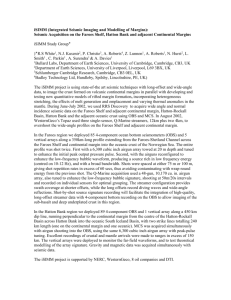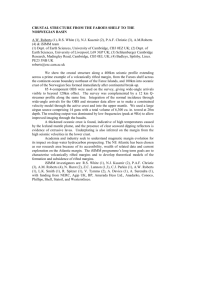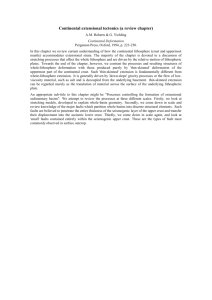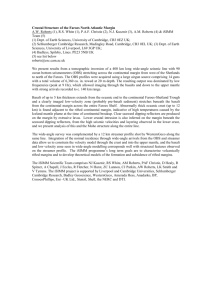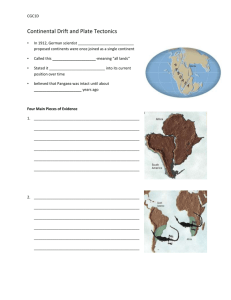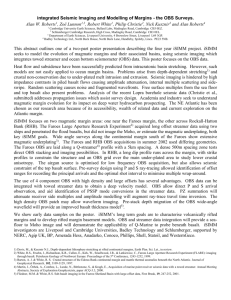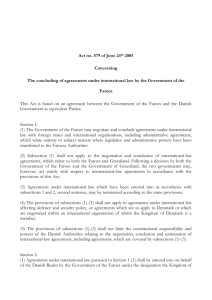Jennifer collaboration 2005
advertisement
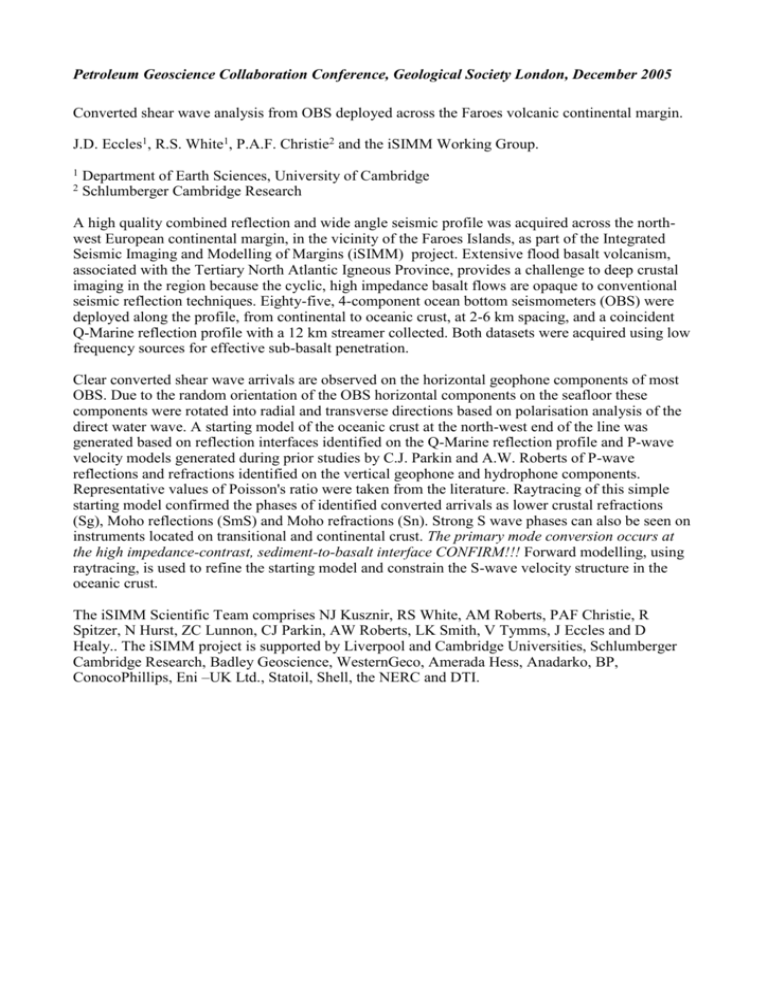
Petroleum Geoscience Collaboration Conference, Geological Society London, December 2005 Converted shear wave analysis from OBS deployed across the Faroes volcanic continental margin. J.D. Eccles1, R.S. White1, P.A.F. Christie2 and the iSIMM Working Group. 1 2 Department of Earth Sciences, University of Cambridge Schlumberger Cambridge Research A high quality combined reflection and wide angle seismic profile was acquired across the northwest European continental margin, in the vicinity of the Faroes Islands, as part of the Integrated Seismic Imaging and Modelling of Margins (iSIMM) project. Extensive flood basalt volcanism, associated with the Tertiary North Atlantic Igneous Province, provides a challenge to deep crustal imaging in the region because the cyclic, high impedance basalt flows are opaque to conventional seismic reflection techniques. Eighty-five, 4-component ocean bottom seismometers (OBS) were deployed along the profile, from continental to oceanic crust, at 2-6 km spacing, and a coincident Q-Marine reflection profile with a 12 km streamer collected. Both datasets were acquired using low frequency sources for effective sub-basalt penetration. Clear converted shear wave arrivals are observed on the horizontal geophone components of most OBS. Due to the random orientation of the OBS horizontal components on the seafloor these components were rotated into radial and transverse directions based on polarisation analysis of the direct water wave. A starting model of the oceanic crust at the north-west end of the line was generated based on reflection interfaces identified on the Q-Marine reflection profile and P-wave velocity models generated during prior studies by C.J. Parkin and A.W. Roberts of P-wave reflections and refractions identified on the vertical geophone and hydrophone components. Representative values of Poisson's ratio were taken from the literature. Raytracing of this simple starting model confirmed the phases of identified converted arrivals as lower crustal refractions (Sg), Moho reflections (SmS) and Moho refractions (Sn). Strong S wave phases can also be seen on instruments located on transitional and continental crust. The primary mode conversion occurs at the high impedance-contrast, sediment-to-basalt interface CONFIRM!!! Forward modelling, using raytracing, is used to refine the starting model and constrain the S-wave velocity structure in the oceanic crust. The iSIMM Scientific Team comprises NJ Kusznir, RS White, AM Roberts, PAF Christie, R Spitzer, N Hurst, ZC Lunnon, CJ Parkin, AW Roberts, LK Smith, V Tymms, J Eccles and D Healy.. The iSIMM project is supported by Liverpool and Cambridge Universities, Schlumberger Cambridge Research, Badley Geoscience, WesternGeco, Amerada Hess, Anadarko, BP, ConocoPhillips, Eni –UK Ltd., Statoil, Shell, the NERC and DTI.




